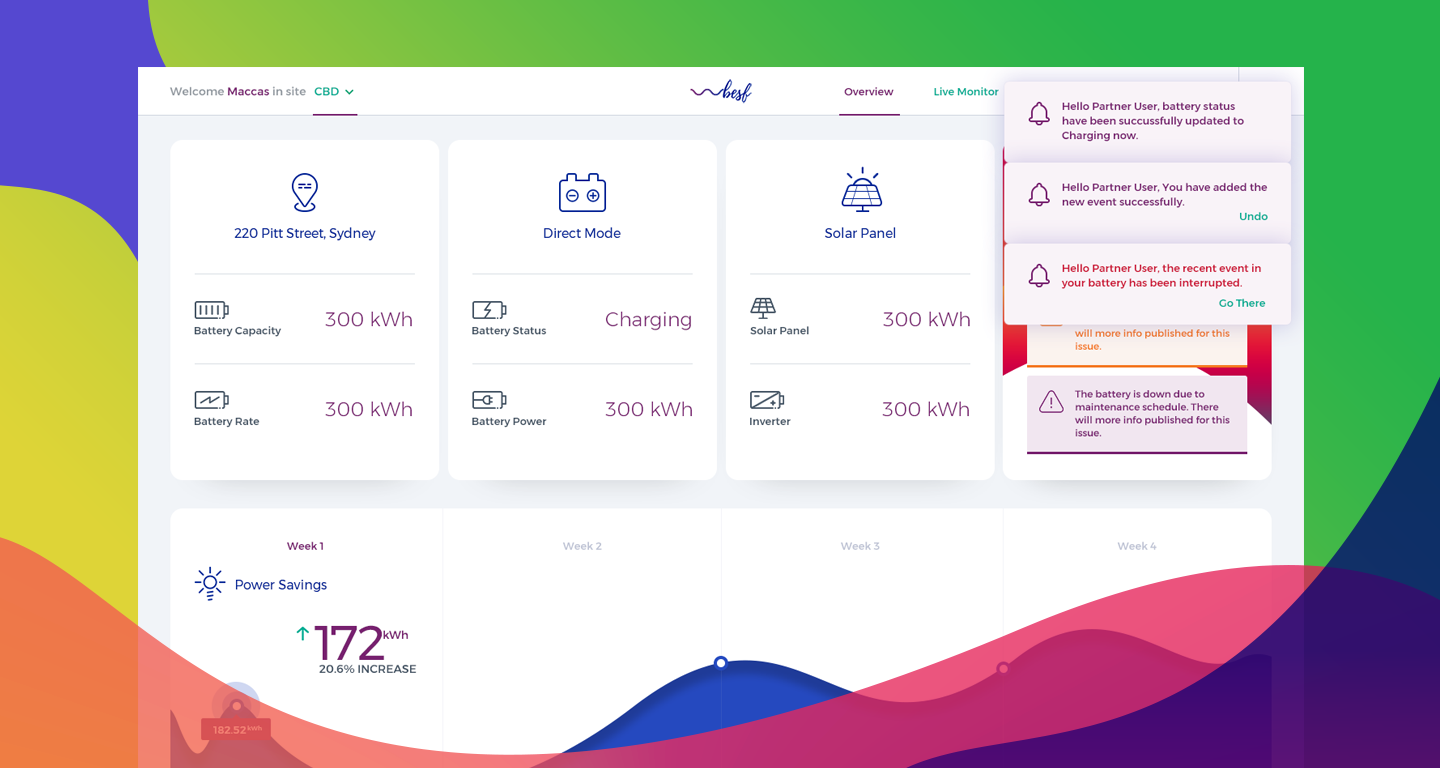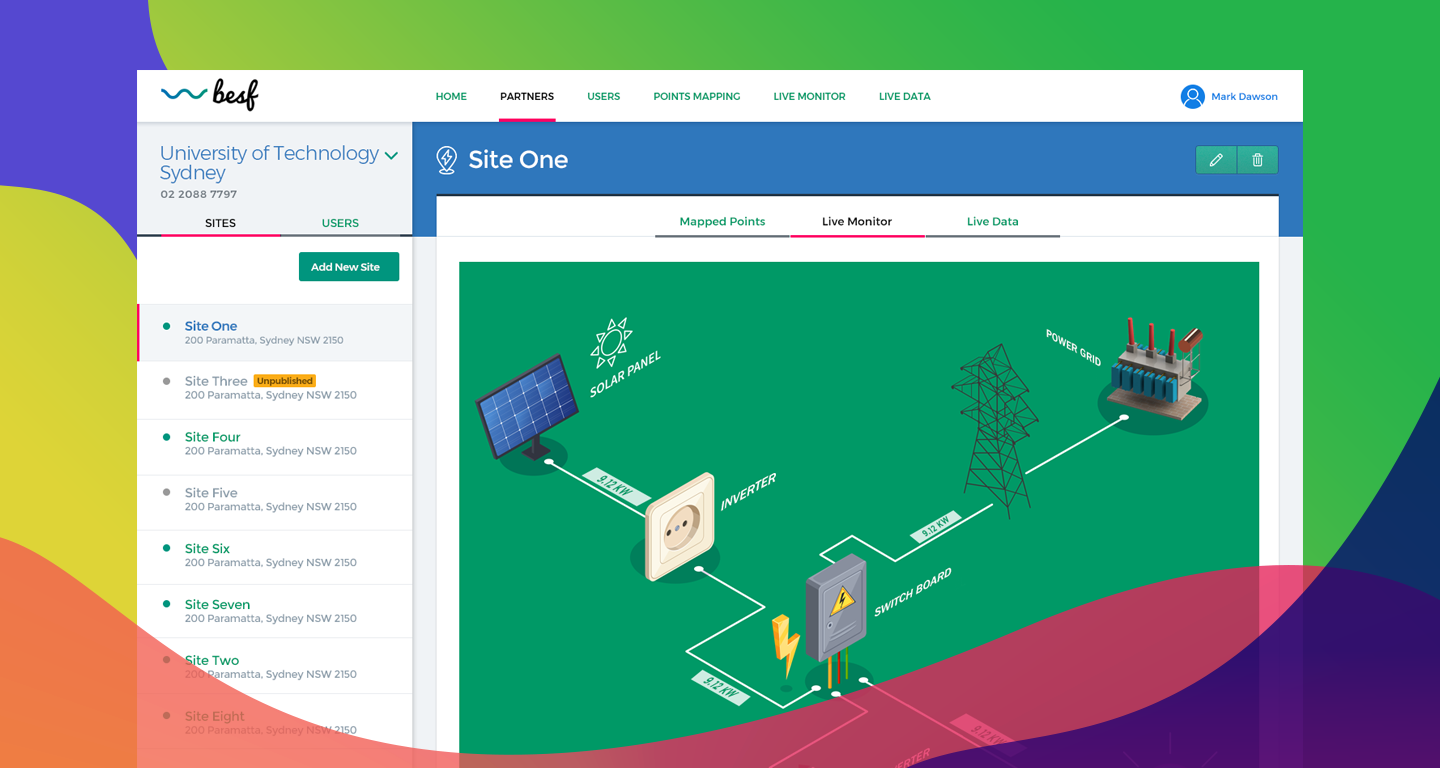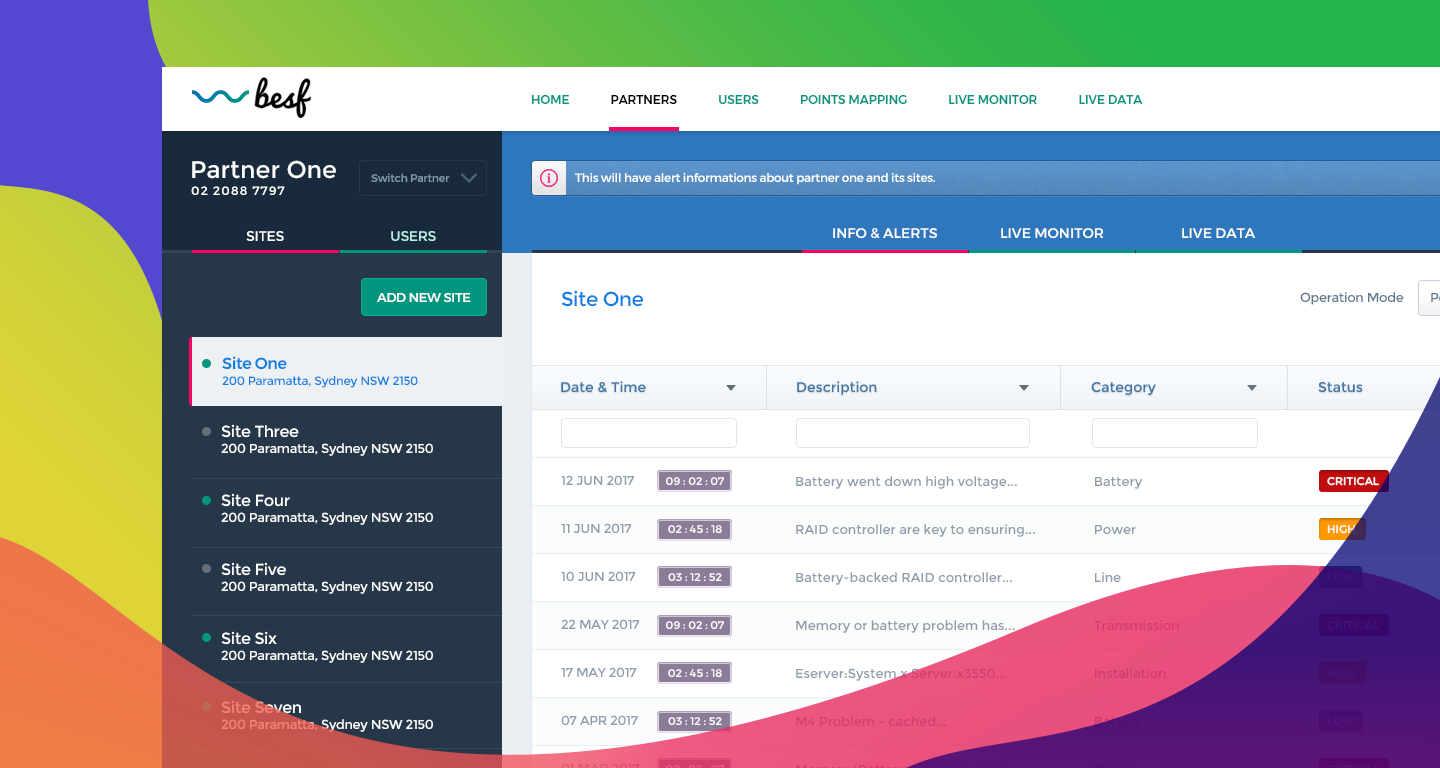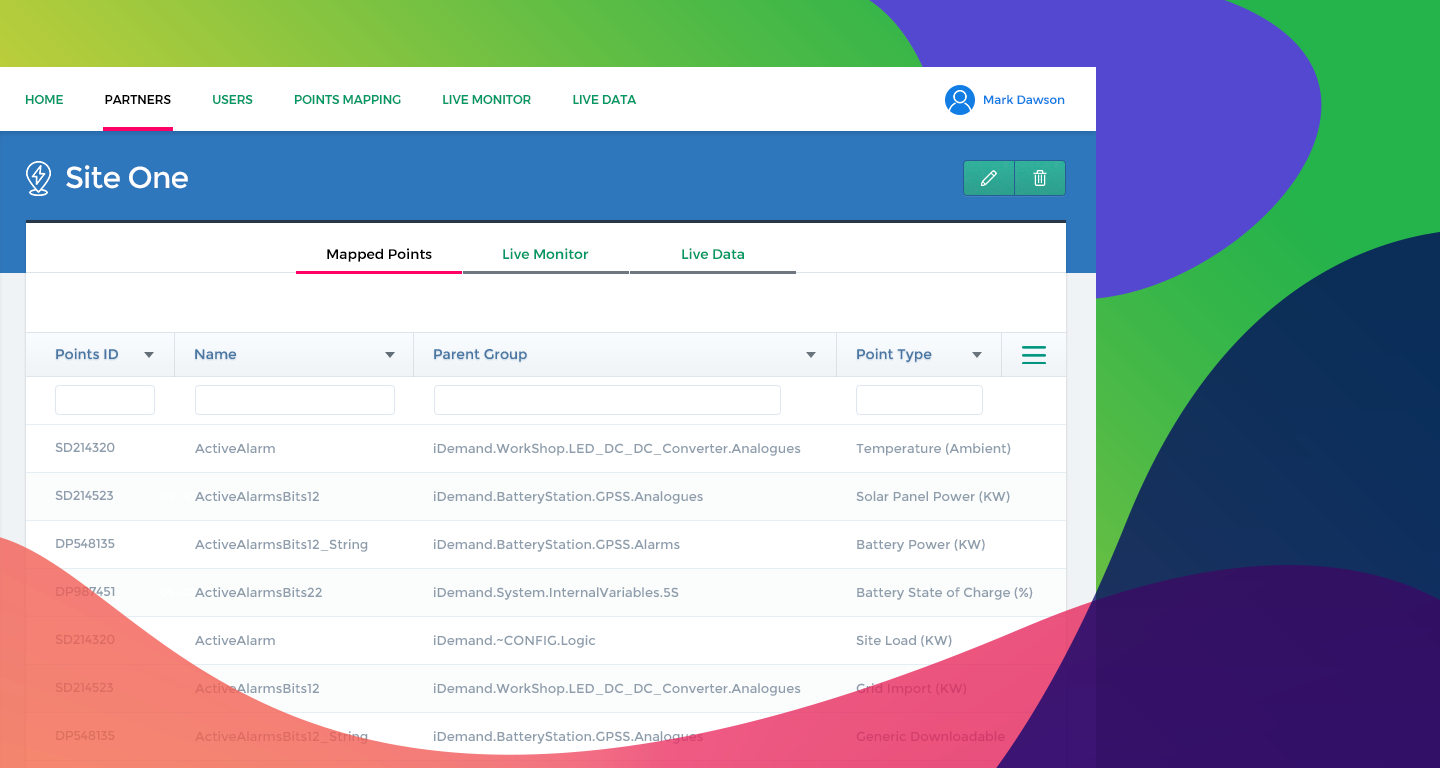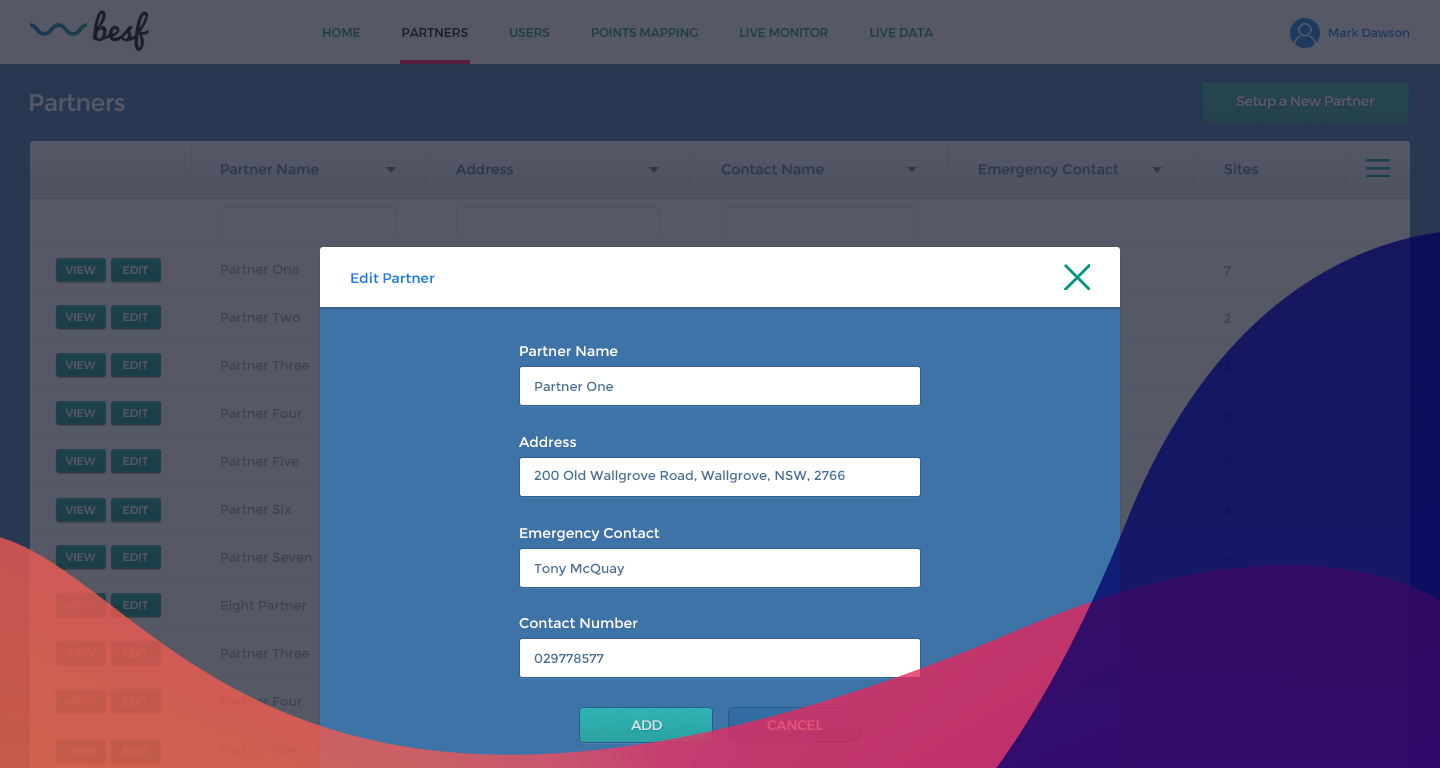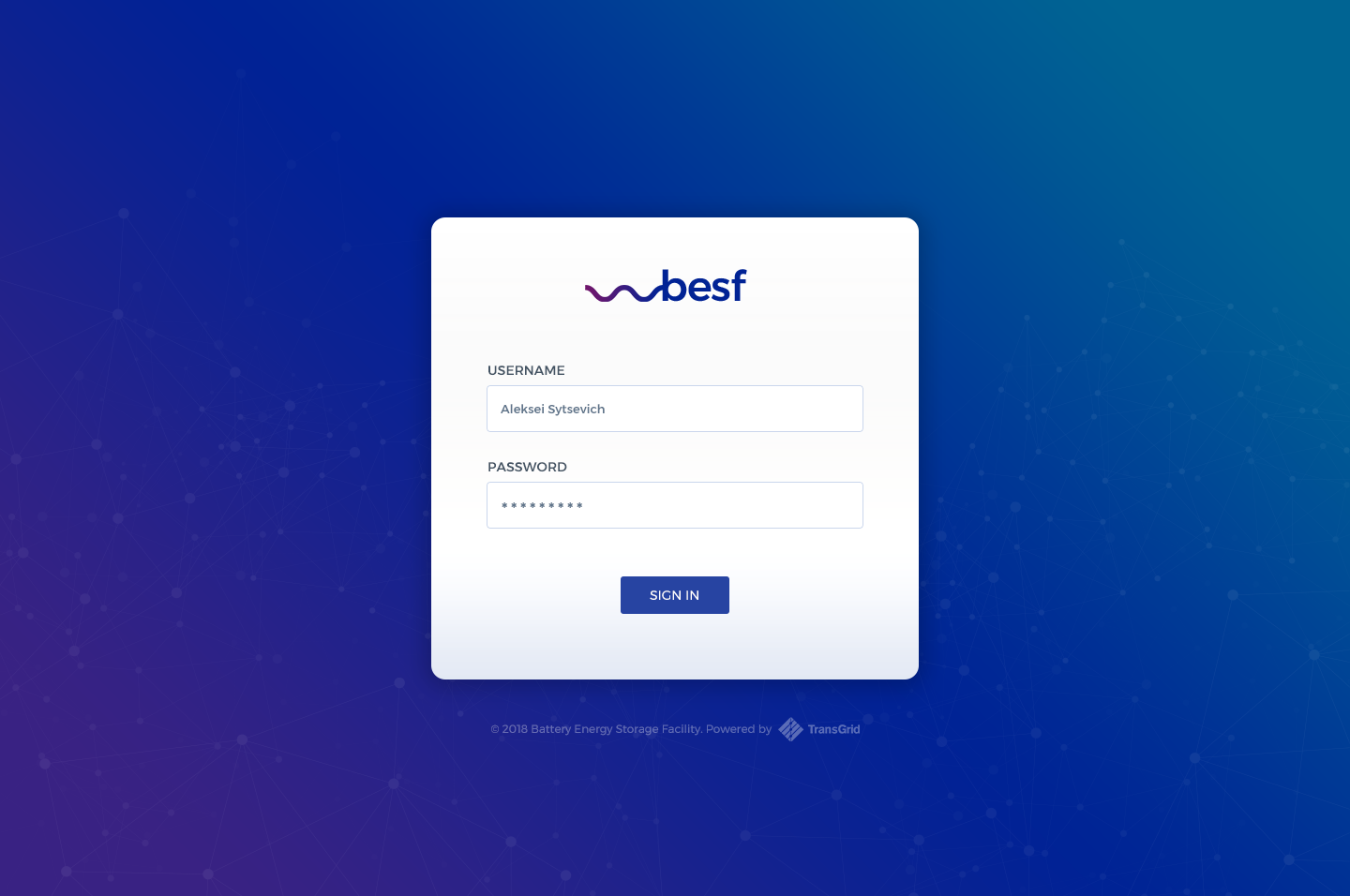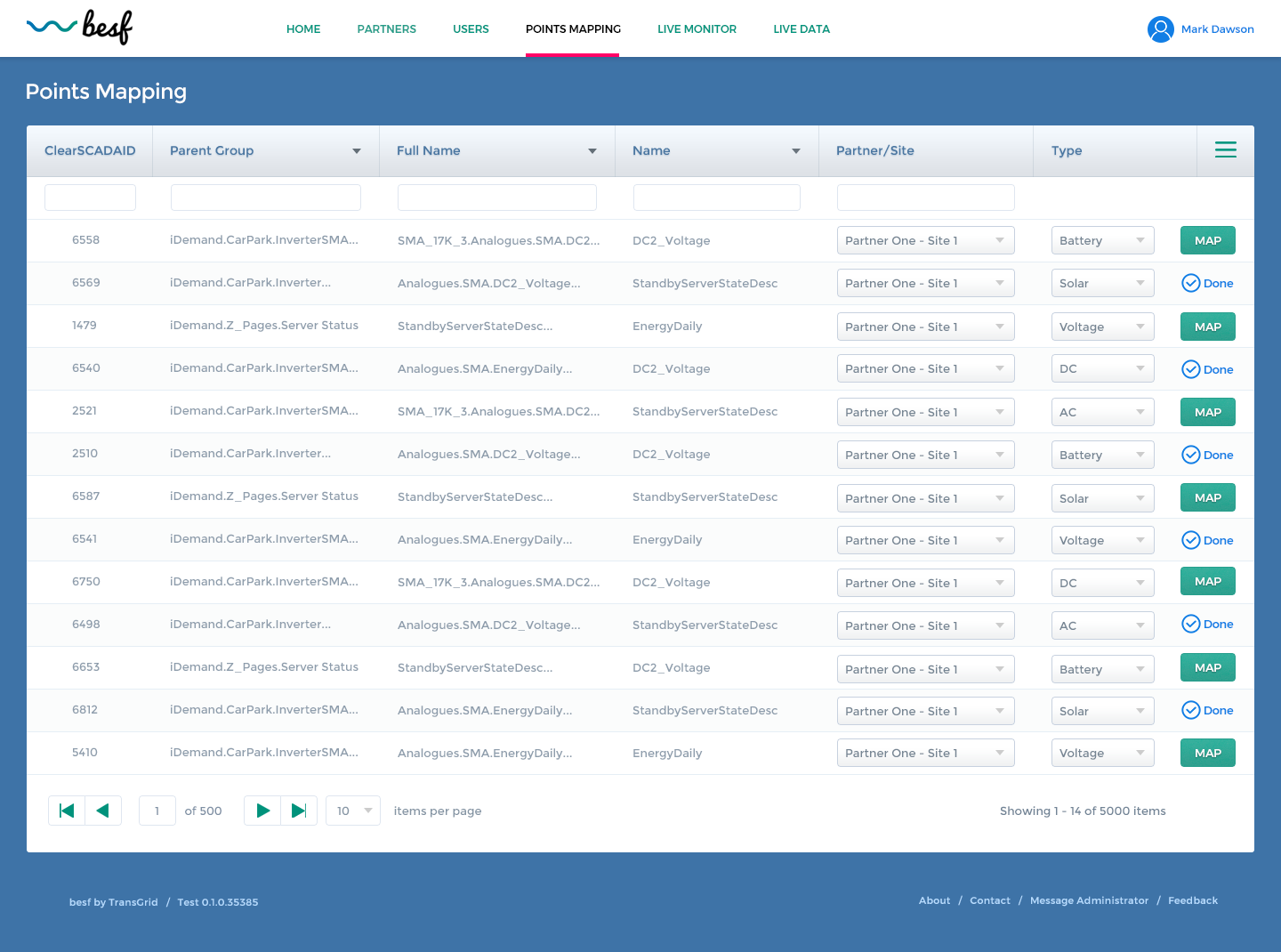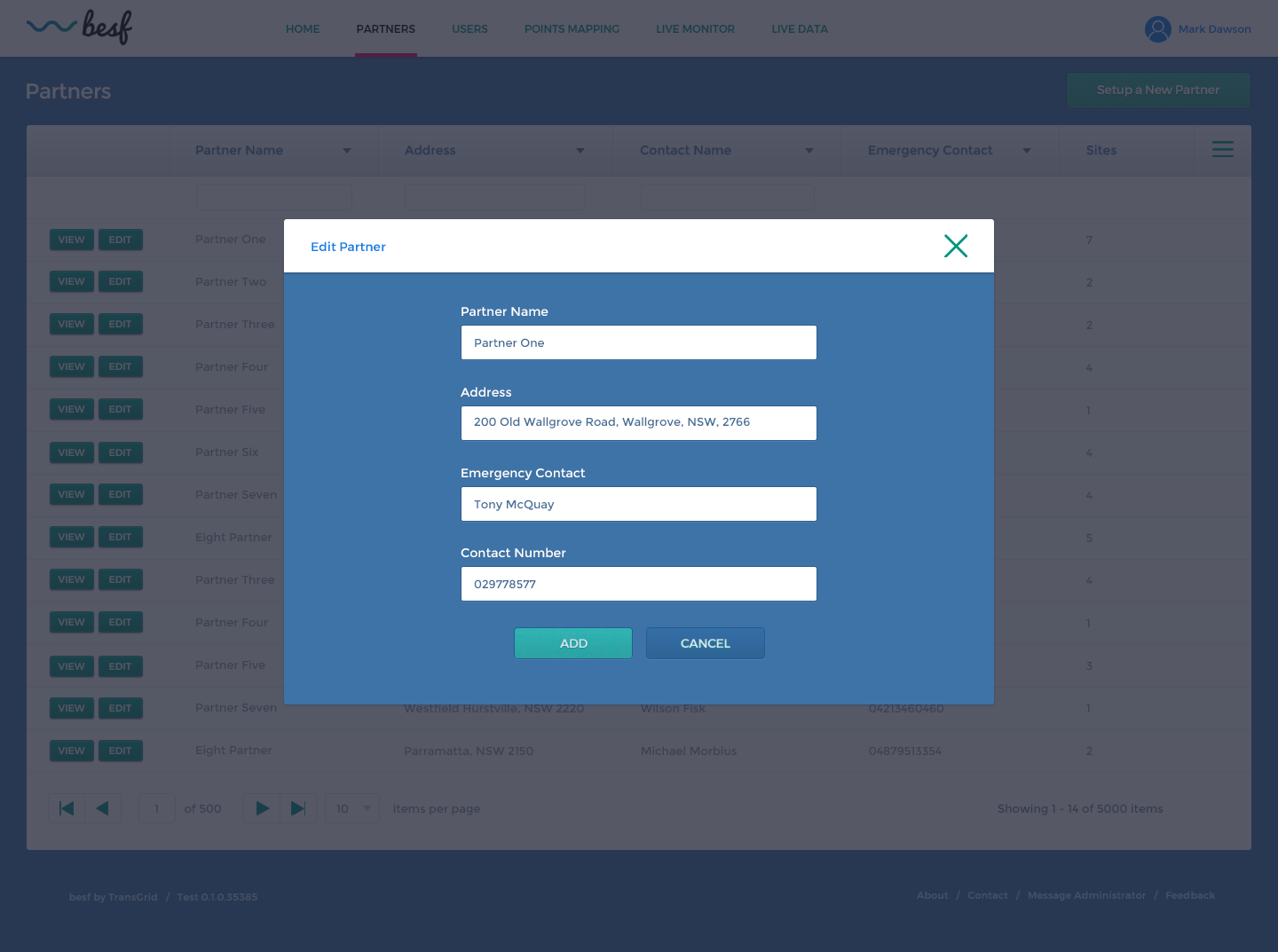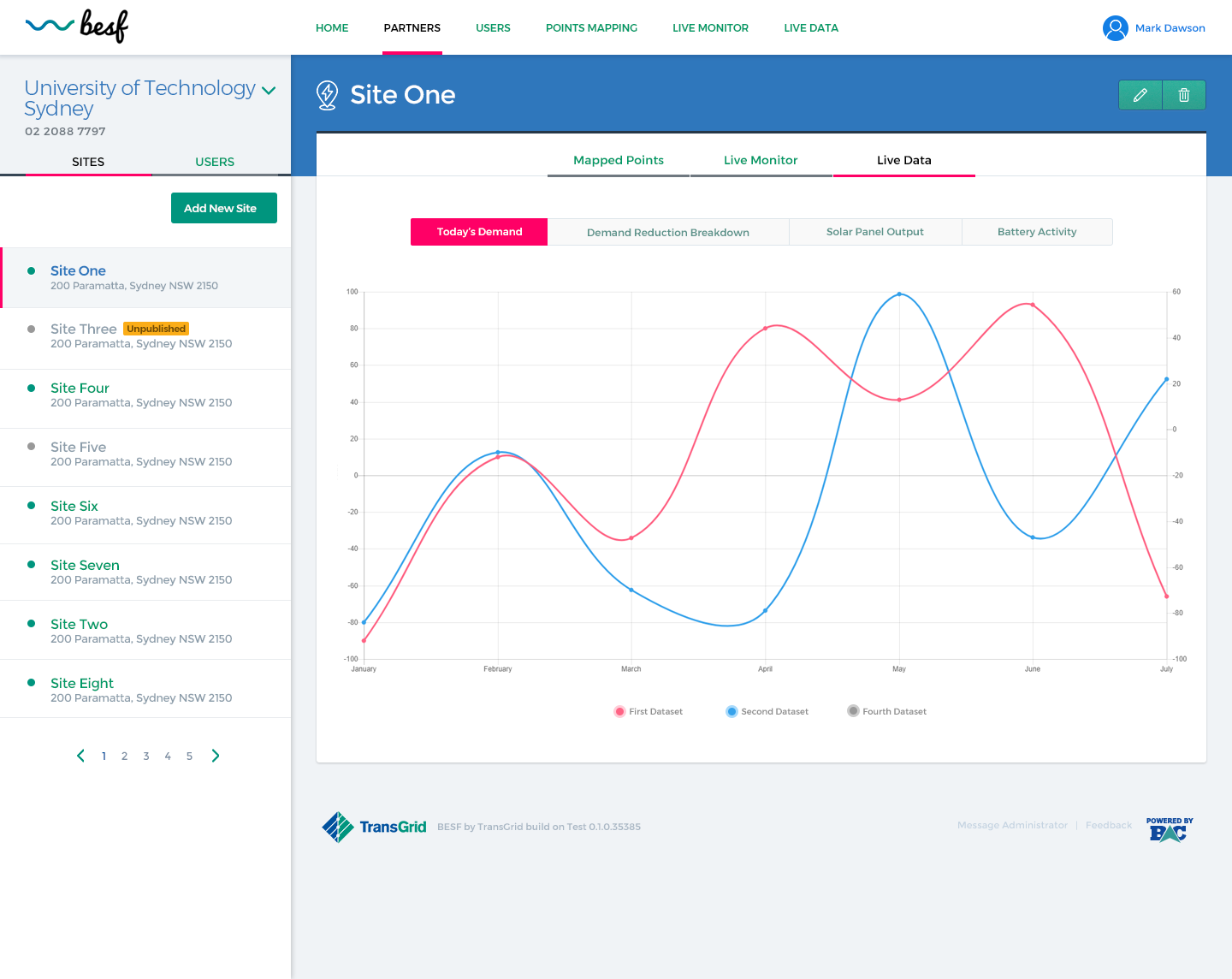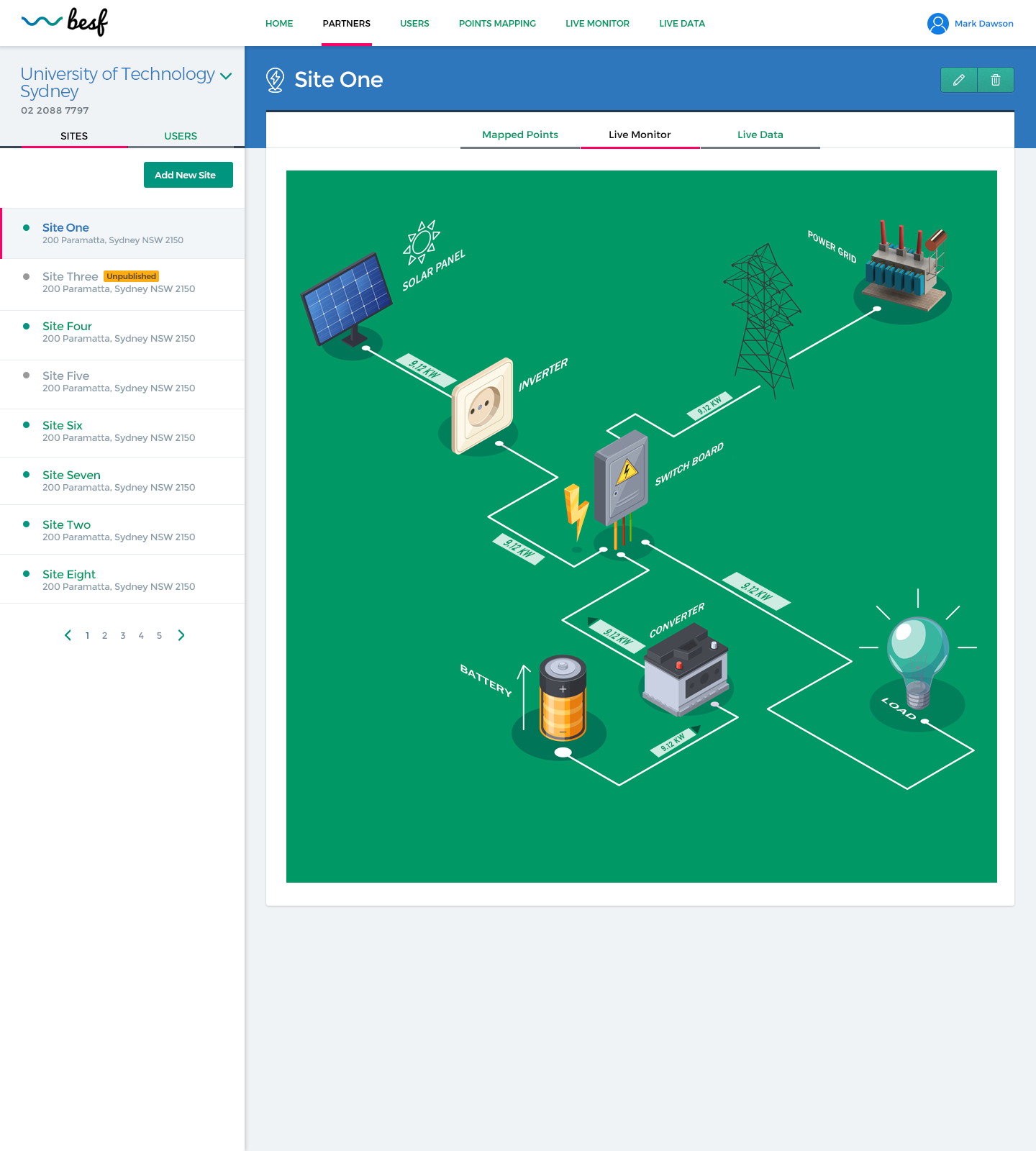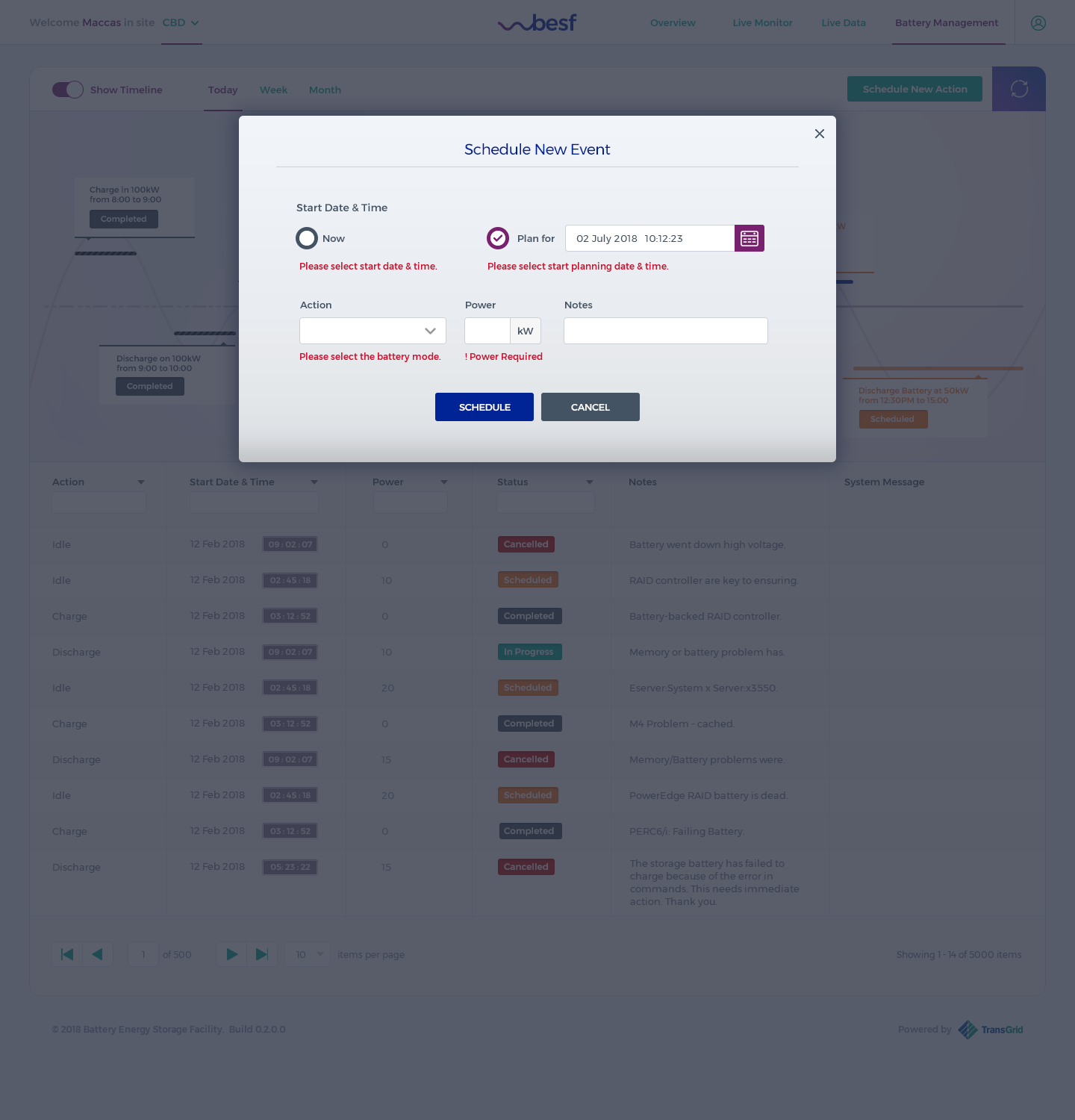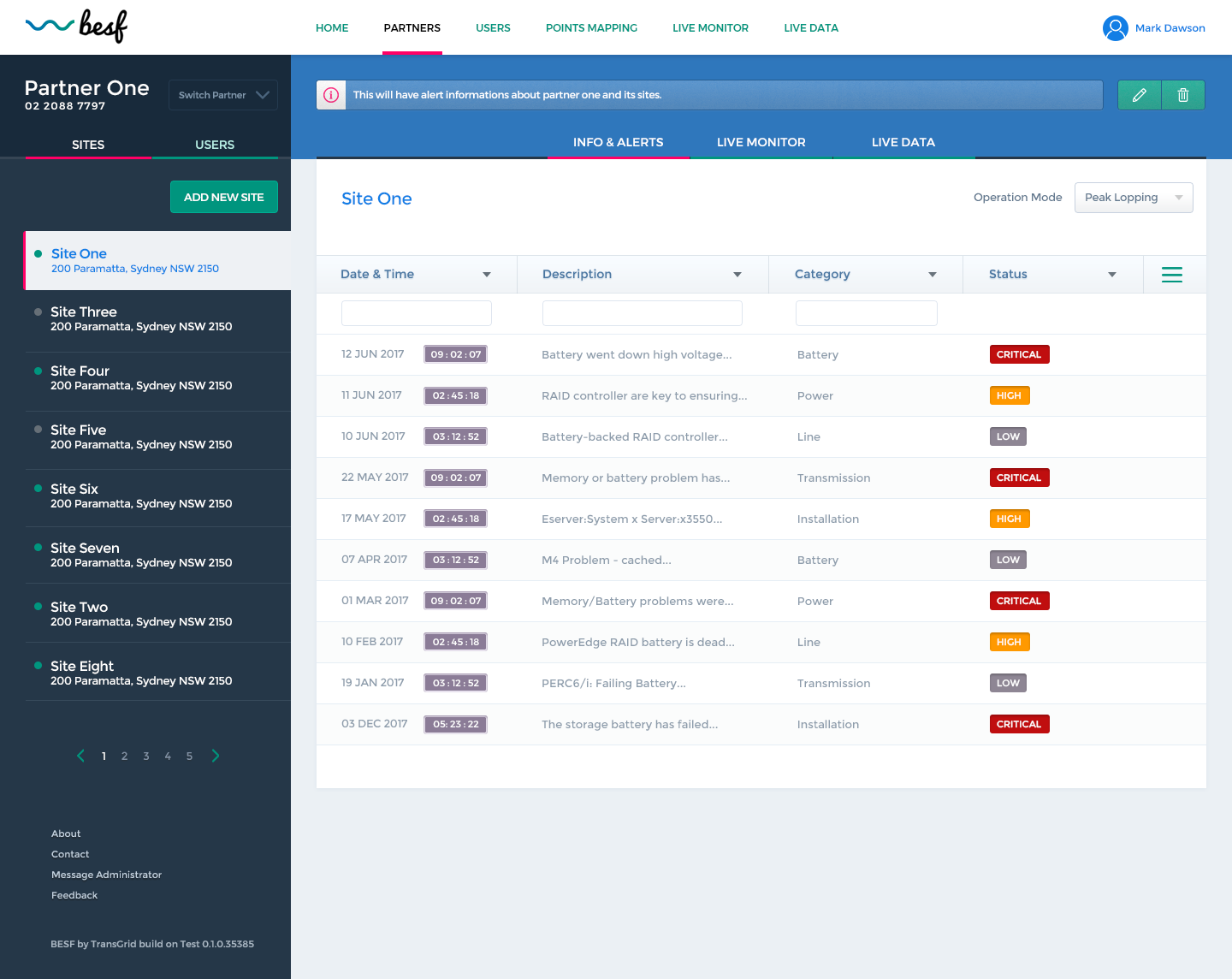TG SmartCharge, a project by TransGrid and NSW government, integrates Tesla battery technology to optimize energy usage across NSW.
TG SmartCharge represents a groundbreaking endeavor in the realm of energy management, initiated by TransGrid in partnership with the NSW government. This project harnesses the advanced capabilities of Tesla's battery technology to meet the increasing energy demands of New South Wales, particularly focusing on high-consumption clients.
TG SmartCharge is not just a battery management system; it's a comprehensive web application designed to facilitate real-time monitoring, management of multiple sites and clients, and the efficient operation of battery systems across various locations.
The ultimate goal is to prove that batteries with advanced inverter capabilities can replace traditional inertia and provide a cost-effective solution for the anticipated inertia shortfall in NSW
The Challenge
To create an intuitive, user-friendly interface that allows seamless management of multiple sites, users, and battery operation modes, while providing live monitoring and alerts.
Objectives
The application's core objective is to provide an intuitive, feature-rich platform that enables users to manage Tesla battery operations effectively. This includes the ability to view live data on energy consumption, monitor solar outputs, track grid activities, and control battery operation modes.
Human-centered design process
The design of TG SmartCharge is a testament to the importance of user experience in the realm of technical and industrial applications, aiming to bridge the gap between sophisticated energy management technology and user-friendly interfaces. This case study delves into the challenges, processes, and outcomes of creating such a solution, underlining the transformative impact of UX design in the energy sector.
- Empathize: The first step involved deep engagement with potential users and stakeholders of TG SmartCharge. This included conducting interviews with facility managers, energy experts, and government officials to understand their challenges, needs, and expectations from such a system. Ethnographic research methods, such as observing the users in their natural working environment, were also employed to gain a holistic understanding of the context in which the application would be used.
- Define: In this phase, the insights gathered from the empathize stage were synthesized to define the core user needs and challenges. User personas were developed to represent the diverse user base of TG SmartCharge, capturing their motivations, goals, and frustrations. User journey maps were created to outline the end-to-end experience of users, identifying crucial touchpoints and opportunities for improvement.
- Ideate: The ideation stage involved brainstorming sessions with a cross-functional team, including designers, developers, and stakeholders. The goal was to generate a wide range of creative solutions to the defined user needs. Various concepts for TG SmartCharge were developed during this phase, with an emphasis on ease of use, efficiency, and meeting the specific requirements of energy management.
- Prototype: The prototyping phase was characterized by the development of low-fidelity and high-fidelity prototypes. Initially, simple sketches and wireframes were created to visualize the basic layout and functionalities. These evolved into more sophisticated, interactive prototypes using tools like AxureRP, enabling a more realistic experience of the application.
- Test: The final stage of the design process involved rigorous testing of the prototypes with actual users. This included usability testing to evaluate the ease of use and overall user experience. Feedback from these sessions was crucial in refining the design, leading to iterative improvements. The testing phase ensured that TG SmartCharge was not only functionally robust but also aligned with the needs and expectations of its users.
In an era where data-driven decisions are paramount, the integration of advanced analytics tools with project management and documentation platforms like Jira and Confluence is imperative.
By leveraging these tools, we aimed to provide comprehensive insights into project timelines, team efficiency, and task management, ultimately driving productivity improvements.
Outcome
TG SmartCharge emerged as a sophisticated yet user-friendly application, adhering to Global Experience Language principles for consistent and maintainable design. The platform efficiently manages different battery modes, aligning with NSW's goal to reduce energy consumption and costs.
Final insights
The project highlighted the importance of a component-based design approach, facilitating quick iterations and cohesive product experience. Technical challenges in security and architecture were addressed, ensuring robust and reliable system performance. User Acceptance Testing (UAT) provided critical feedback, leading to continuous improvement in the product design.
